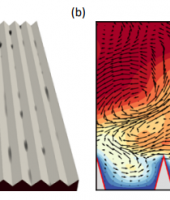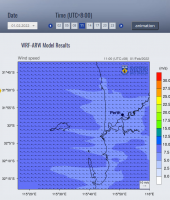Atomistic Investigation on Energy Absorption of Semiconductor Nanopillars
This project aims to use molecular dynamics (MD) simulations to quantitatively assess energy absorption of semiconductor nanostructures. Subject to external loading, energy absorption can be realized via phase transformation in semiconductor nanostructures. It is shown that, under mechanical loads, almost all the II-VI, III-V and IV-IV group compounds are able to change their lattice structures or so-called phase transformation. Thus, phase transformation could be utilized as a mechanism for energy damping/absorption. This project is then designed to quantify the efficiency of semiconductor nanopillar-based energy absorption agents through MD simulations
Area of science
Engineering, Geosciences, Physics, Technology
Systems used
Magnus
Applications used
1,000,000The Challenge
Although in-situ tests are commonly used today, the force resolution is inadequate for the measurement of mechanical properties because of the small lateral dimension (< 55 nm) of a nanopillar. Moreover, the phase transformation process is invisible in experiments. It is expected that the missing details of experiments can be filled through MD simulations.
The Solution
We have designed numerical samples with lateral dimensions from 5 to 20 nm under diverse temperatures and strain rates. The gap between 20 and 55 nm was chosen according to trends of simulating and experimental results. Our computational scheme ascertained the force to initiate phase transformation in nanopillars with lateral dimensions below 20 nm as well as the phase transformation process.
![]()
Repeatable energy absorption of a ZnO nanopillar. The upper panel shows the absorbed energy and the ratio of an inversion domain boundary at each of 31 cycles. The lower panel is patterns of inversion domains after each absorption. Inversion domain boundaries are outlined by cyan polylines.
The Outcome
To quantify the efficiency of energy absorption in ZnO nanopillars with lateral dimension less than 20 nm, we have generated hundreds of initial configurations with diverse lateral dimension, strain rate and temperature. The Pawsey Centre’s resources enable us to obtain the efficiency of energy absorption in an acceptable duration, while this is technically unavailable from experimental protocols. Here, we would like to take this opportunity to thank the Pawsey Centre’s administrators for their kind help and support.
List of Publications
[1] J. Wang, F.J. Ke, Y.L. Bai, and C. Lu, Energy absorption in ZnO nanopillars, Nano Energy, to be submitted.







